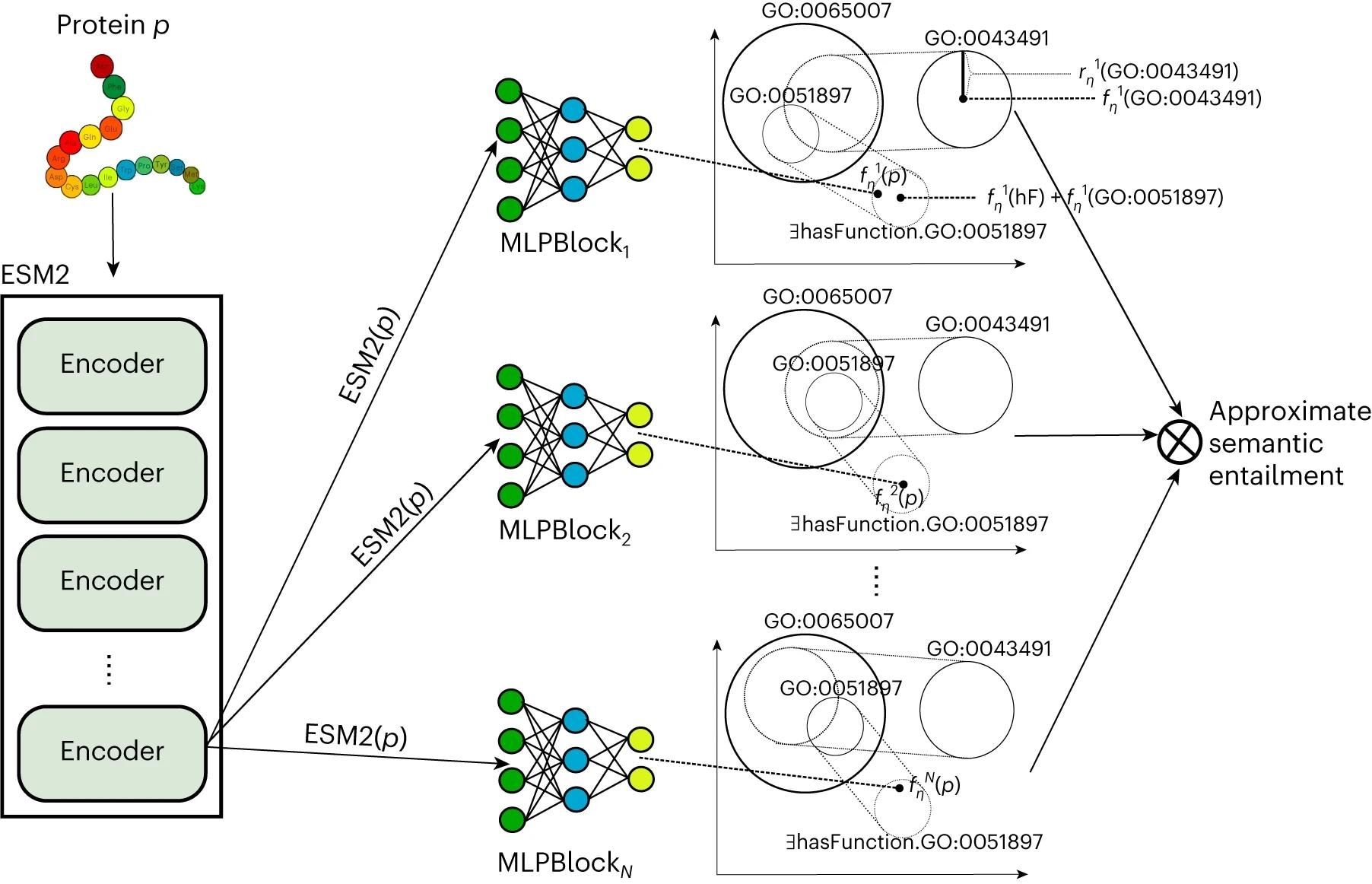In a current research printed within the journal Nature Machine Intelligence, researchers developed “DeepGO-SE,” a technique to foretell gene ontology (GO) capabilities from protein sequences utilizing a big, pre-trained protein language mannequin.
Examine: Protein operate prediction as approximate semantic entailment. Picture Credit score: DarwinAmelie / Shutterstock
Though protein construction prediction has more and more change into correct through the years, protein operate prediction is difficult as a result of restricted variety of recognized capabilities, compounded by their interactions and complexity. GOs are used to explain protein capabilities. GO consists of three sub-ontologies describing molecular capabilities (MFO) of proteins, their position in organic processes (BPO), and mobile parts (CCO) the place they’re lively.
A major limitation of a number of operate prediction strategies is their reliance on sequence similarity. Though efficient for proteins with comparable sequences and well-characterized capabilities, this method is much less dependable for these with no or little sequence similarity. Furthermore, protein capabilities are based totally on their construction, and proteins with comparable buildings might have dissimilar sequences.
The background data contained in axioms of GOs might be leveraged by machine studying fashions for improved predictions. There are only some strategies that make the most of the formal axioms in GOs. Hierarchical classification strategies, akin to DeePred, TALE, DeepGO, and GOStruct2 use subsumption axioms however ignore others that could possibly be used to restrict search area and improve predictions.
The research and findings
Within the current research, researchers developed a protein operate prediction technique, DeepGO-SE, utilizing a big, pre-trained protein language mannequin. DeepGO-SE carried out knowledge-enhanced studying by semantic entailment in three steps. First, an approximate mannequin was generated utilizing ELEmbeddings primarily based on logical principle consisting of GO axioms (background data) and assertions about proteins like “protein has a operate C.”
Subsequent, single proteins had been represented by evolutionary scale mannequin 2 (ESM2) embeddings and used as cases within the approximate mannequin to maximise the assertion’s reality as an optimization goal. Lastly, this process was repeated to generate ok approximate fashions; entailment was outlined as the reality in all fashions, and the ok fashions had been utilized for approximate semantic entailment.
The researchers in contrast their technique with 5 baseline strategies utilizing a UniProtKB/Swiss-Prot dataset. Baseline strategies had been naïve method, multilayer perceptron (MLP), DeepGraphGO, DeepGoZero, and DeepGOCNN. GO sub-ontologies had been individually educated and evaluated. DeepGO-SE considerably outperformed the baseline strategies.

Left: protein p is embedded in a vector area utilizing ESM2 mannequin. Proper: a number of fashions with an MLP that embeds the protein in the identical area because the GO axioms. Moreover, predictions from a number of fashions are mixed to carry out approximate semantic entailment.
In MFO, the utmost F measure (F max) of DeepGO-SE was 0.554, 7% bigger than that of DeepGoZero and MLP strategies. In BPO, its F max (0.432) was 8% greater than DeepGraphGO. In CCO, DeepGO-SE achieved an F max of 0.721. Subsequent, the group modified the protein embeddings to encode extra info relating to the proteome and its interactions.
To this finish, enter vector(s) to DeepGO-SE had been altered, and three experiments had been carried out. First, ESM2 embeddings had been used as enter for every protein in DeepGOGAT-SE. Subsequent, experimental annotations of a protein to molecular capabilities had been used as enter in DeepGOGATMF-SE. Lastly, DeepGO-SE model-derived prediction scores for molecular capabilities had been used because the enter in DeepGOGATMF-SE-Pred.
Combining ESM2 embeddings and protein-protein interactions (PPIs) in DeepGOGAT-SE decreased the efficiency of MFO prediction (F max: 0.525) however marginally improved the minimal semantic distance (S min). Apart from, BPO prediction was improved (F max: 0.435). Notably, the very best BPO efficiency was noticed with DeepGOGATMF-SE (F max: 0.448), adopted by DeepGOGATMF-SE-Pred (F max: 0.444). Integrating PPIs in DeepGO-SE elevated the F max for CCOs to 0.736.
The group additionally evaluated their baseline strategies utilizing the neXtPro dataset (of manually predicted protein capabilities). They discovered that DeepGO-SE achieved the very best F max (0.386). DeepGOGAT-SE carried out the very best for BPOs, with an F max of 0.35. The group couldn’t consider the DeepGOGATMF-SE-Pred technique as a result of many proteins lacked handbook molecular capabilities.
Lastly, an ablation research was carried out to evaluate the contribution of particular person parts of the fashions. ELEmbeddings axiom loss capabilities had been eliminated for every mannequin, and performance prediction loss was optimized. Eradicating axiom losses from DeepGO-SE lowered MFO efficiency with out impacting BPO and CCO efficiency.
In DeepGOGAT-SE, eradicating axioms and semantic entailment modules barely improved the efficiency of MFO however lowered that of BPO and CCO. BPO and CCO efficiency was higher when axioms and semantic entailment had been eliminated in fashions utilizing molecular capabilities and PPIs as options.
Conclusions
Taken collectively, DeepGO-SE is an improved protein operate prediction technique that comes with sequence options derived from a pre-trained protein language mannequin, GO background data, and PPIs. It may possibly predict BPO and CCO from a protein sequence alone; nonetheless, PPI info was required for finest outcomes. As a result of many novel proteins lack recognized interactions, strategies that predict interactions for novel proteins from their sequence solely are vital.
Journal reference:
- Kulmanov M, Guzmán-Vega FJ, Duek Roggli P, Lane L, Arold ST, Hoehndorf R. Protein operate prediction as approximate semantic entailment. Nat Mach Intell. Revealed on-line February 14, 2024, DOI: 10.1038/s42256-024-00795-w, https://www.nature.com/articles/s42256-024-00795-w

